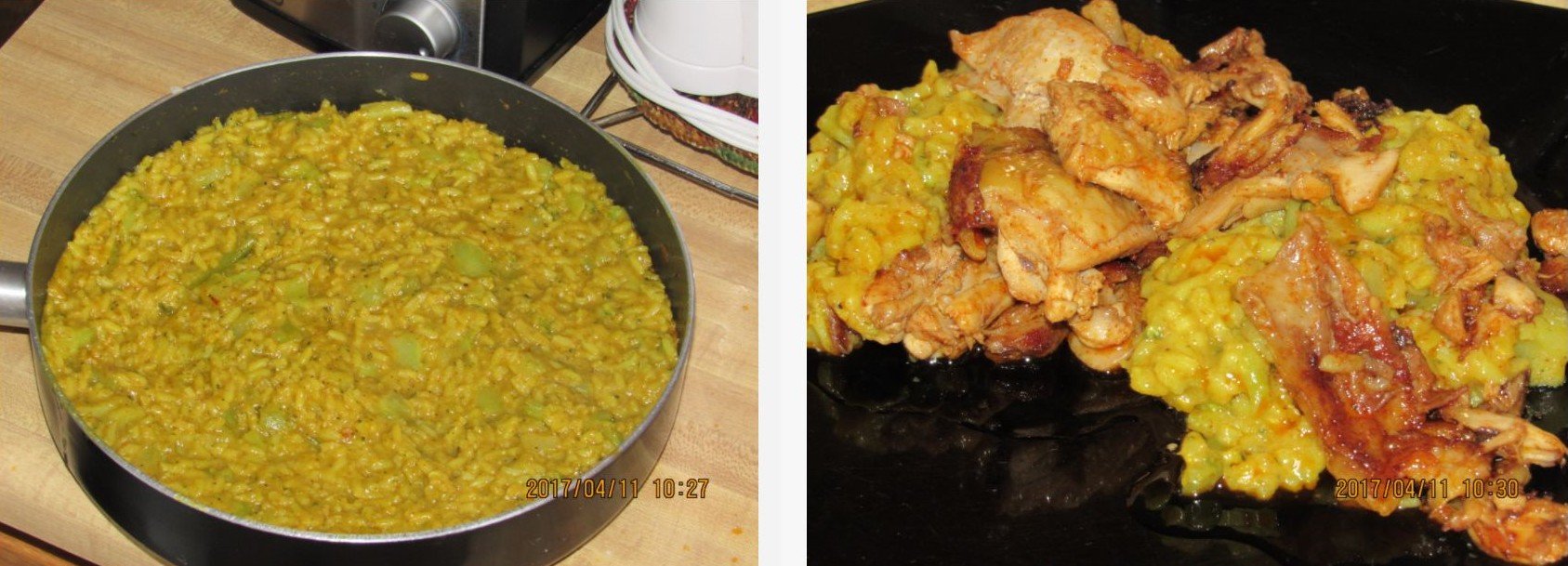The first-ever printed curry recipe is found in Hannah Glasse’s 1747 cookbook, “The Art of Cookery Made Plain and Easy.”
These are instructions on how “to make a currey the Indian way” that involves stewing chickens in water and then seasoning the meat with finely beaten ginger, turmeric and pepper, followed by a little butter, cream and lemons.
This method is described further down on this page as the dairy-free method, and in my Curry Gravy recipe with vegetables instead of chicken.
 Pic1: the oldest printed curry recipe
Pic1: the oldest printed curry recipe Pic2:
cooking dry-curry rice
Pic2:
cooking dry-curry rice  Pic4:
wet-curry chicken
Pic4:
wet-curry chicken